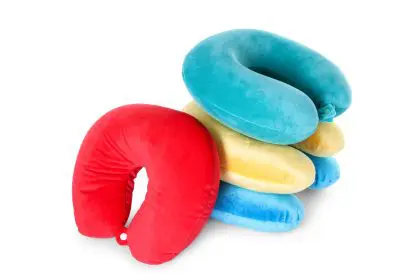In an age where wellness tools constantly emerge and fade, toe spacers have steadily gained recognition as more than just another passing trend. These unassuming devices, crafted from materials like silicone and foam, are challenging conventional approaches to foot care. Their growing popularity stems not from flashy marketing but from a fundamental understanding of foot mechanics and their role in overall body alignment.
Understanding the mechanics behind toe separation
At their core, toe spacers serve as gentle interventions in the natural architecture of our feet. They work by creating deliberate space between toes that have likely spent years compressed in traditional footwear. This separation might seem simple, but its effects ripple through the entire foot structure, influencing everything from balance to posture.
The science-backed advantages of toe spacing
Recent research has unveiled multiple ways these devices contribute to foot health. When used appropriately, toe spacers can address various foot conditions while potentially preventing future problems. Here’s a detailed look at their most significant benefits:
Structural realignment and its implications
The relationship between toe position and foot function reveals itself most clearly in conditions like bunions and hammer toes. Toe spacers provide a gentle but consistent force that helps guide the big toe back toward its natural alignment. While this realignment is temporary, regular use can help maintain better positioning and potentially slow the progression of common foot deformities.
The mechanical advantage extends beyond the toes themselves. By promoting proper toe alignment, these devices can help redistribute pressure across the entire foot, potentially alleviating stress points that develop from years of improper positioning.
The flexibility factor in foot health
Modern lifestyles often neglect foot flexibility, leading to restricted movement and potential discomfort. Toe spacers address this by engaging the intrinsic muscles of the feet – small but crucial muscles that contribute to overall foot function. Regular use can help maintain and improve the flexibility of these often-overlooked muscle groups.
Pain management through proper alignment
One of the most immediate benefits users report is pain relief, particularly in specific foot conditions. Neuromas, painful nerve conditions affecting the ball of the foot, often respond well to the decompression provided by toe spacers. Similarly, individuals dealing with corns find relief as the spacers help redistribute pressure and reduce friction in problem areas.
Athletic performance and foot preparation
The impact of toe spacers extends into athletic performance, though not in the way many might expect. While these devices shouldn’t be worn during actual workouts, their use during recovery periods can help prepare feet for better alignment during exercise. This preparation particularly benefits movements requiring stable foot positioning, such as squats and deadlifts.
Balance enhancement through better toe positioning
The relationship between toe alignment and balance becomes increasingly important as we age. Proper toe positioning contributes significantly to our ability to maintain stability. By helping to correct toe deformities and promote better alignment, toe spacers can play a role in improving overall balance and reducing fall risk.
Understanding the limitations and risks
Despite their benefits, toe spacers aren’t without potential drawbacks. Users may experience initial discomfort as their feet adjust to the new positioning. Skin irritation can occur, particularly if the spacers aren’t maintained properly or replaced when worn. Individuals with certain medical conditions, particularly those affecting foot sensation, should exercise caution and consult healthcare providers before use.
Guidelines for safe and effective use
Success with toe spacers often depends on proper implementation. Starting gradually with short periods of use – typically 20 to 30 minutes – allows feet to adjust comfortably. Wearing them during relaxed activities at home, rather than during exercise or in tight shoes, provides the best environment for adaptation.
Alternative approaches to foot care
While toe spacers offer numerous benefits, they’re not the only option for maintaining foot health. Resistance training using bands can help strengthen foot muscles, while specialized taping techniques can provide similar alignment benefits. These alternatives can complement toe spacer use or serve as standalone approaches to foot care.
The future of foot health with toe spacer
As our understanding of foot biomechanics continues to evolve, the role of toe spacers in preventive foot care may expand. Current research suggests these devices could play a more significant role in early intervention for foot problems, potentially reducing the need for more invasive treatments later.
The growing interest in toe spacers reflects a broader shift toward proactive foot health management. As we continue to understand the connection between foot alignment and overall well-being, simple interventions like toe spacers may become increasingly important tools in maintaining foot health and preventing common foot problems.
This measured approach to foot care, combining traditional wisdom with modern understanding, suggests that while toe spacers aren’t a universal solution, they represent a valuable tool in the broader spectrum of foot health maintenance. Their continued study and application may reveal even more benefits as our understanding of foot biomechanics advances.













